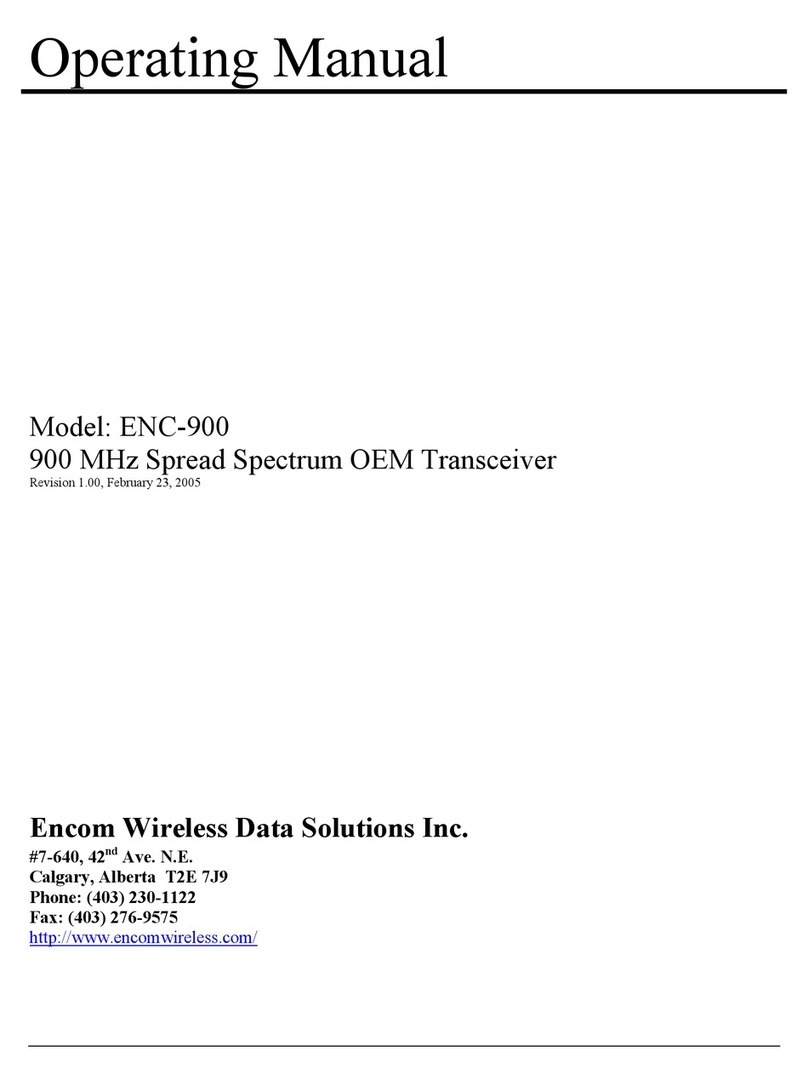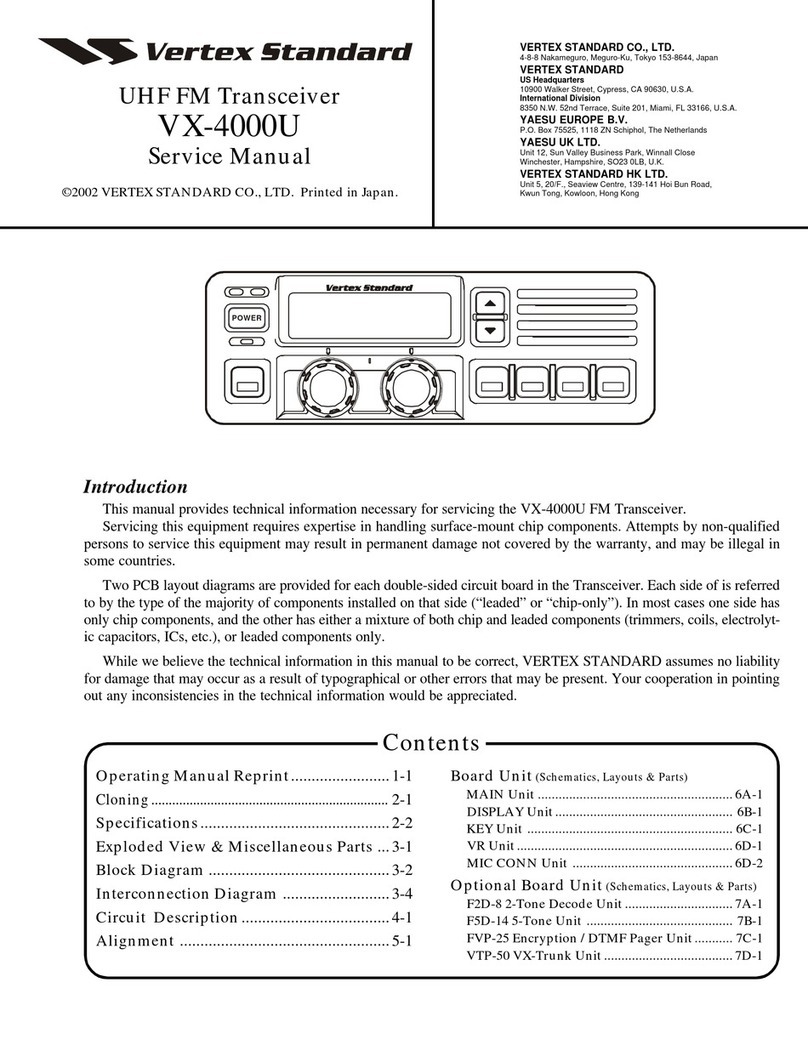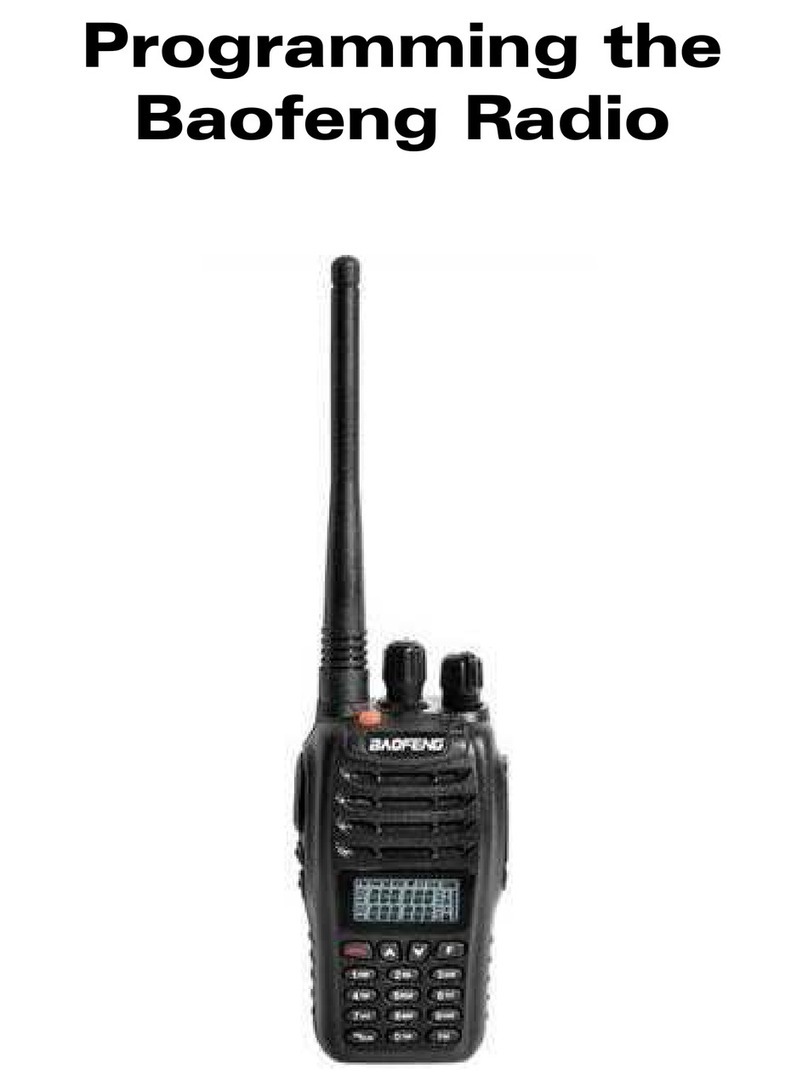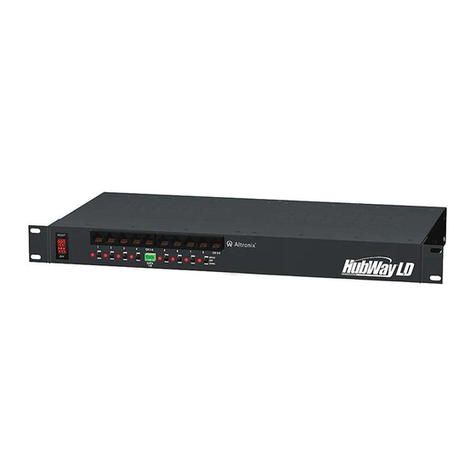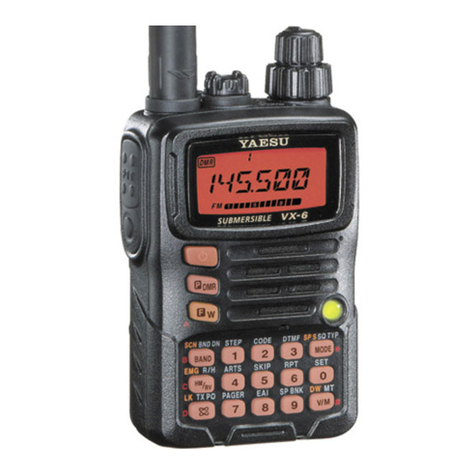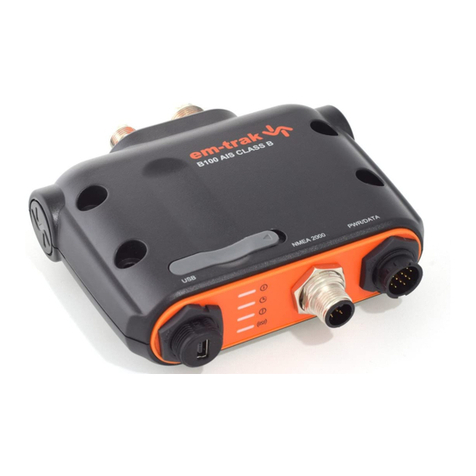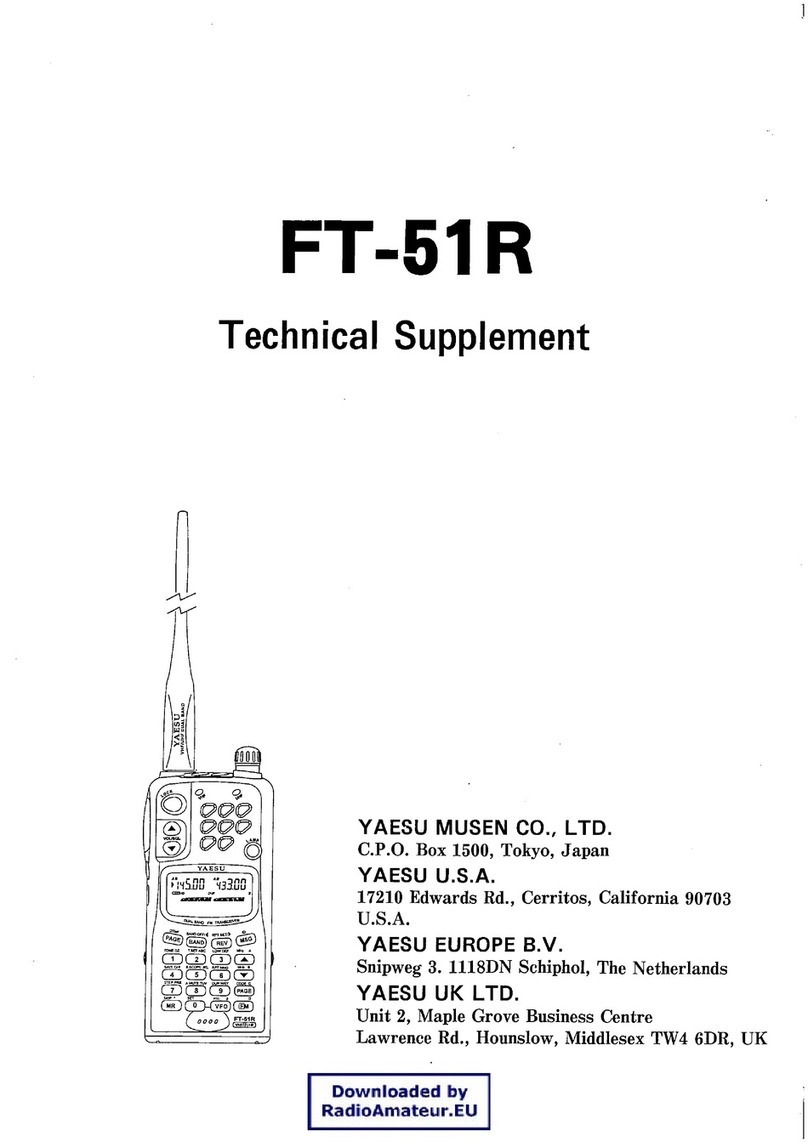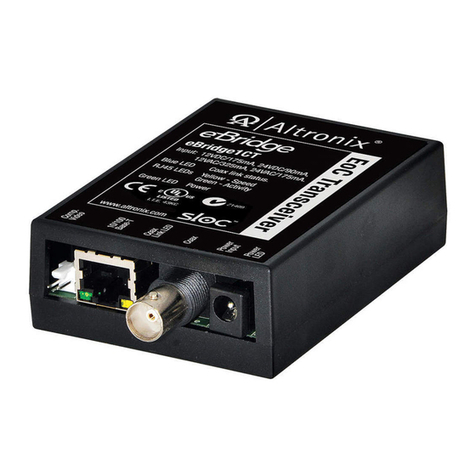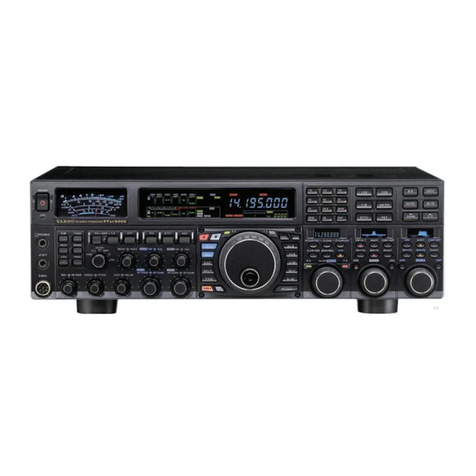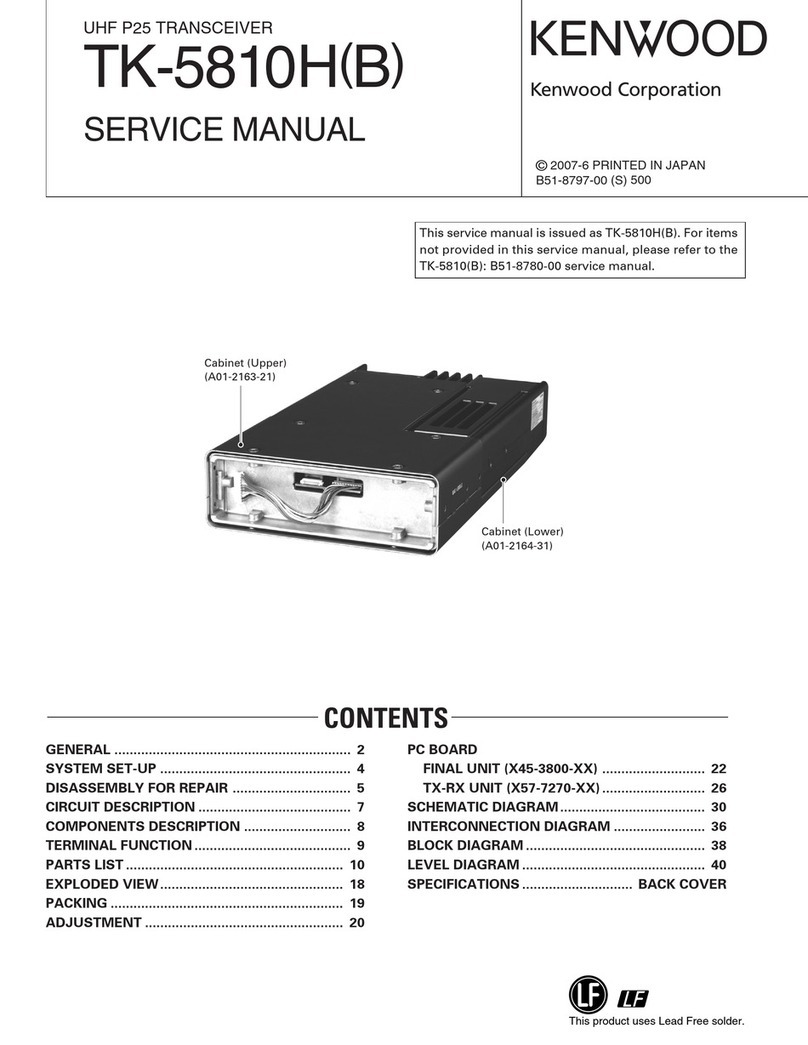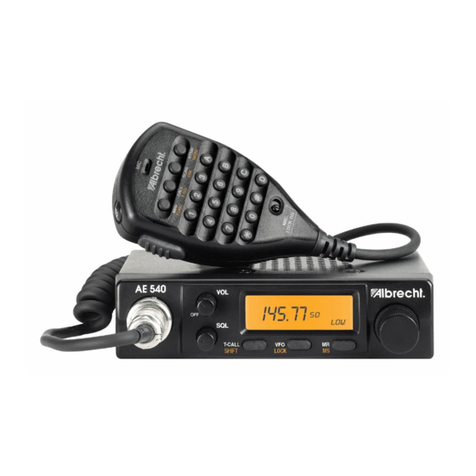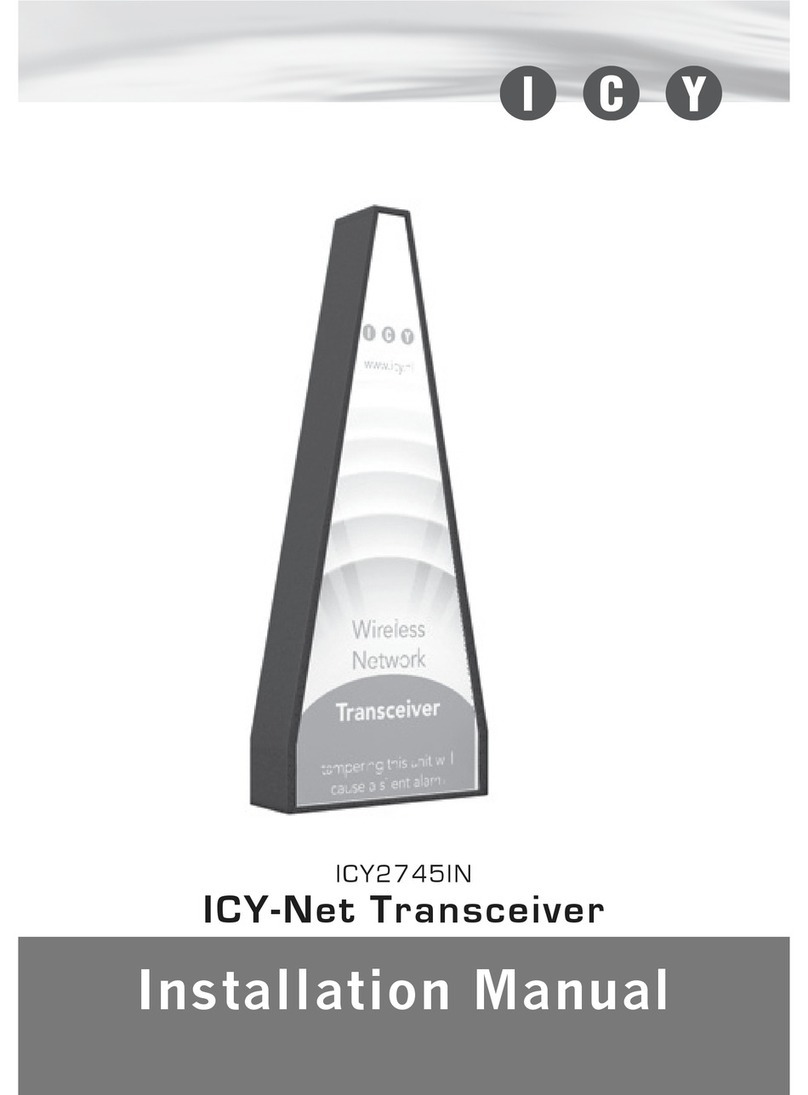Hendricks QRP Kits BITX20A User manual

Hendricks QRP Kits
BITX20A
Assembly Manual
27 October 2007
The BITX20 idea originated with a transceiver designed by Ashar Farhan VU3ICQ that was intended
to be easy to build from surplus and salvage components. That transceiver has been built and used by
many hams worldwide with great success. The BITX20A by Hendricks QRP Kits is a PCB realization
of the original design which includes a parts kit so you don't have to locate all the necessary
components. In addition, several upgrades have been added to make the transceiver output cleaner and
to raise power output to the full QRP limit of 10 watts.
There is a BITX20 discussion group available at: http://groups.yahoo.com/group/BITX20/
Doug Hendricks KI6DS web site for kit sales is at: http://www.qrpkits.com
Farhan's original BITX20 design web site is at: http://www.phonestack.com/farhan/bitx.html
This is how your new BITX20A kit will look as delivered.
Photo by KC0WOX
No, you don't get the pen or the wire stripper, just the box of parts.

Opening the box you will see bags of parts and a PC Board.
Photo by KC0WOX
Photo by KC0WOX

Parts Inventory:
Quantity Value Device Quantity Value Device
1 160 pf External tuning cap 1 2.2 Resistors
5 10 uf POL RIZED C P 1 4.7
7 100 uf POL RIZED C P 9 10
1 220 pf POLYSTYRENE 2 22
2 470 pf POLYSTYRENE 13 100
4 30 pf Trim capacitor 14 220
2 470
1 0.01 uf 3 10K
40 0.1 uf 2 150 K
3 10 pf 15 1K
10 100 pf 11 2.2K
1 15 pf 1 2.7K
3 180 pf 1 22K
2 220 pf 1 3.3K
3 33 pf 11 4.7K
1 0.022 uf 5 11 MHz XT L/S
2 56 pf Quantity Value Device
1 8.2 pf 1 33v ZENER_DO35_V
4 82 pf 1 5.6v ZENER_DO35_V
1 9.1v ZENER_DO35_V
1 1N4004 Diode
12 1N4148 Diode

Quantity Value Device Quantity Value Device
16 2N3904 Transistor 1 SB320 Diode
1 2N5486 Transistor 2 HE TSINK
4 2N7000 Transistor 1 REL Y
2 BS170 MOSFET
1 FQN1N50C MOSFET
1 LM386N-4 F P
2 IRF510 MOSFET Quantity Value Device
2 200 3318_TRIMMER 1 1.2 uH molded choke
3 10K 3318_TRIMMER 1 8.2 uH molded choke
1 10k Fine tune external pot 8 FT37-43 Toroid Core (Black)
1 10K Volume control external 5 T37-6 Toroids Core (Yellow)

Photo by K7HKL
It is advisable that you inventory your parts to make sure everything is available and ready for
assembly. Each builder may have his/her own way of organizing parts, but if you do not, you might try
using a block of Styrofoam packing material as shown in the above picture. Parts are sorted by type
and size (ohms, micro-farads, etc). Toroid cores in this picture are stacked on wooden toothpicks
which were inserted into the Styrofoam.

Some Assembly Recommendations:
Before you start assembling your new BITX20A, there are a few things you might want to review.
1. Most of the resistors, diodes, and some axial leaded capacitors in this kit are installed on end.
To make your kit look more professional, it is advisable to bend the longer lead of these
components over a scrap of PCB material so that all your exposed lead bends look
approximately the same.
2. You will be twisting enamel coated wires together to make the windings for toroid transformers.
To do this you can use the drill and bent nail method or fabricate a manual twisting device from
stiff wire and a tubular insulator.
3. Be especially observant of component orientation stenciled on the PCB. Polarized components
must be installed correctly. In some cases the exposed lead is specifically selected to provide
test equipment access for tune up and troubleshooting.

Kit Assembly
Receive-Transmit Power Changeover Relay and Power Input Components
[ ] D-17, 1N4004 Observe Polarity
[ ] K1, 351 Relay Hold the relay body flat to the PCB while soldering.
[ ] Connect push-to-talk part of microphone connector, or a temporary momentary switch as PTT.
Note: Pads for the push to talk connection are provided along one edge of the board and
are marked as PTT with the ground pad also marked with Gnd . Or if you do
not want to connect your microphone jack yet, you can just solder a small
momentary switch across these pads for testing purposes during alignment.
Caution: The changeover relay applies ground to the receive section power feeds during
transmit mode and ground to transmit power feeds during receive mode. This
means that you cannot jumper +12 volts to the transmit sections while in receive
mode, and cannot jumper +12 volts to the receive sections when in transmit
mode without shorting something and possibly damaging your PCB or
components.
[ ] D-18, SB320 Observe Polarity
[ ] C-87, 0.1 mfd (marked 104)
[ ] C-74, 100 mfd Observe Polarity
[ ] Solder
[ ] Clip Excess Lead Length
[ ] Inspect Solder Connections
TEST: At this time you can apply +12 volts and test the relay by shorting the PTT pads and monitor
Receive and Transmit voltages to see that power is being transferred properly.

ReceiverAFAmplifier
[ ] C-36, 100 mfd Observe Polarity
[ ] C-83, 0.1 mfd (marked 104 )
[ ] R-81, 10 ohms (brown-black-black)
[ ] C-82, 10 mfd, Observe Polarity
[ ] IC-1, LM386, Make sure you get this positioned properly when you insert it.
[ ] Solder
[ ] Clip Excess Lead Length
[ ] Inspect Solder Connections
[ ] C86, 100 mfd, Observe Polarity
[ ] R-82, 10 ohms (brown-black-black)
[ ] R-79, 220 ohms (red-red-brown)
Illustration 2: Receive Audio Pre-Amplifier (N7VE Photo)
Illustration 3: Receive Audio LM-386 Power Amplifier
(N7VE Photo)

[ ] R-80, 10K ohm potentiometer NOTE: Off-board component. Use 6 inch leads.
Ground lead near C-82, Hot lead near Q-16.
[ ] C-81, 10 mfd Observe Polarity
[ ] C-80, 100 mfd Observe Polarity
[ ] R-78, 4.7K ohms (yellow-violet-red)
[ ] Solder
[ ] Clip Excess Lead Length
[ ] Inspect Solder Connections
[ ] Q-16, 2N3904 (Position as stenciled on the PCB)
[ ] Q-25, 2N3904 (Position as stenciled on the PCB)
[ ] R-88, 4.7K ohms, (yellow-violet-red)
[ ] R-89, 22K ohms (red-red-orange)
[ ] C-47, 0 pf (This is an artifact from an older PCB design. Do not install any capacitor here.)
[ ] C-79, 0.022 mfd (marked 22K)
[ ] R-77, 3.3K ohms (orange-orange-red)
[ ] C-8, 10 mfd Observe Polarity
[ ] Speaker or Headphone Jack Connection. Use 6 inch leads.
Ground is the pad near C-75.
[ ] Solder
[ ] Clip Excess Lead Length
[ ] Inspect Solder Connections
TEST: At this point you can test your receiver audio amplifier by connecting a speaker, applying +12
volts to the power input pads. Insert a tone at the negative side of C8, and adjust the volume control for
a comfortable listening level.

Transmitter AFAmplifier (Microphone Amplifier)
[ ] R-76, 10 ohms (brown-black-black)
[ ] R-92, 4.7K ohms (yellow-violet-red)
NOTE: This is power for FET mike. Omit for dynamic or crystal mike.
[ ] C-60, 10 mfd Observe Polarity
[ ] C-76, 0.01 mfd (marked 104)
[ ] R-73, 2.2K ohms (red-red-red)
[ ] R-72, 10K ohms (brown-black-orange)
[ ] R-75, 1K ohms (brown-black-red)
[ ] Solder
[ ] Clip Excess Lead Length
[ ] Inspect Solder Connections
[ ] Q-15, 2N3904 (position matching that stenciled on PCB)
Illustration 4: Transmitter AF Amplifier (N7VE Photo)

[ ] R-74, 100 ohms (brown-black-brown)
[ ] C-73, 100 mfd Observe Polarity
[ ] R-93, 220 ohms (red-red-brown)
[ ] C-77, 10 mfd Observe Polarity
[ ] C-75, 100 mfd Observe Polarity
[ ] Solder
[ ] Clip Excess Lead Length
[ ] Inspect Solder Connections
TEST: You can test the microphone amplifier by using an audio amplifier to monitor the negative side
of C-77 while you key your microphone and talk into it.
BFO MixerAssembly
[ ] T-6, 8:8:8 turns #28 trifilar on FT37-43 (black) core. This is three wires, each 6 inches long.
Twist them together for 8 twists per inch
and wind this on the core.
Illustration 5: BFO Mixer Section (N7VE Photo)

[ ] C-66, 15 pf (marked 15)
[ ] C-65, 30 pf variable capacitor. Note: Flat side is RF side, round side is ground.
If you get this installed backwards, it will detune the
circuit when you put a metallic screwdriver in it to make
adjustments.
[ ] R-66, 200 pf PCB type potentiometer
[ ] R-65, 220 ohms (red-red-brown)
[ ] R-63, 22 ohms (red-red-black)
[ ] R-64, 220 ohms (red-red-brown)
NOTE: Pay particular attention to the location and values of R-63, R-64, and R-65.
If you get these in the wrong places your receiver sensitivity and transmitter
power output may be degraded. Swapping the 22 ohm resistor with one of
the 220 ohm resistors is a common mistake in early BITX20 units and
possibly in BITX20A kits.
[ ] Solder
[ ] Clip Excess Lead Length
[ ] Inspect Solder Connections
Illustration 6: BFO/Carrier Oscillator Section (N7VE Photo)

BFO & Carrier Oscillator
[ ] C-88, 33 pf NOTE: May not be needed, but provided to insure adequate tuning range.
[ ] C-72, 30 pf variable capacitor, Note: flat side is RF side, round side is ground.
[ ] L-5, 8.2 uh molded inductor (looks like a fat resistor with gray-red-gold-gold bands)
[ ] X-5, 11.0 MHz Crystal. [ ] Add ground wire soldered to crystal case
[ ] C-68, 220 pf (marked 221)
[ ] C-69, 220 pf (marked 221)
[ ] R-70, 150K ohms (marked brown-green-yellow)
[ ] Solder
[ ] Clip Excess Lead Length
[ ] Inspect Solder Connections
[ ] Q-14, 2N3904 (Position according to layout stenciled on PCB)
[ ] R-71, 1K ohms (brown-black-red)
[ ] C-70, 100 mfd Observe Polarity
[ ] R-69, 100 ohms (brown-black-brown)
[ ] R-68, 1K ohms (brown-black-brown)
[ ] Q-13, 2N3904 (Position according to layout stenciled on PCB)
[ ] Solder
[ ] Clip Excess Lead Length
[ ] Inspect Solder Connections
[ ] C-67, 0.1 mfd (marked 104)
[ ] C-71, 0.1 mfd (marked 104)
[ ] R-67, 1K ohms (brown-black-red)
[ ] D-14, 1N4148 Observe Polarity
[ ] D-15, 1N4148 Observe Polarity
[ ] Solder
[ ] Clip Excess Lead Length

[ ] Inspect Solder Connections
TEST: Insert an 11.0 MHz signal across R-64 and listen for a beat-note from the receive audio
amplifier.
Receive 2nd IFAmp and Transmit 1st IFAmp
[ ] C-64, 0.1 mfd (marked 104)
[ ] R-58, 1K ohms (brown-black-red)
[ ] R-57, 2.2K ohms (red-red-red)
[ ] Q-12, 2N3904 (Position according to marking stenciled on PCB)
[ ] R-60, 4.7 ohms (yellow-violet-black)
[ ] C-61, 0.1 mfd (marked 104)
[ ] R-59, 470 ohms (yellow-violet-brown)
[ ] Solder
[ ] Clip Excess Lead Length
[ ] Inspect Solder Connections
[ ] D-13, 1N4148 Observe Polarity
Illustration 7: Second IF Amp Section (N7VE Photo)

[ ] R-61, 220 ohms (red-red-brown)
[ ] C-63, 0.1 mfd (marked 104)
[ ] R-62, 100 ohms (brown-black-brown)
[ ] R-56, 100 ohms (brown-black-brown)
[ ] C-57, 0.1 mfd (marked 104)
[ ] D-12, 1N4148 Observe Polarity
[ ] Q-17, 2N3904 (Position according to layout stenciled on PCB)
[ ] Solder
[ ] Clip Excess Lead Length
[ ] Inspect Solder Connections
[ ] C-58, 0.1 mfd (marked 104)
[ ] R-53, 470 ohms (yellow-violet-brown)
[ ] R-55, 4.7K ohms (yellow-violet-red)
[ ] R-52, 1K ohms (brown-black-red)
[ ] Q-11, 2N3904 (Position according to markings stenciled on PCB)
[ ] Solder
[ ] Clip Excess Lead Length
[ ] Inspect Solder Connections
[ ] R-54, 4.7K ohms (yellow-violet-red)
[ ] C-59, 0.1 mfd (marked 104)
[ ] R-51, 220 ohms (red-red-brown)
[ ] C-89, 100 pf (marked 101)
[ ] C-62, 100 pf (marked 101)
[ ] Solder
[ ] Clip Excess Lead Length
[ ] Inspect Solder Connections
TEST: Insert an 11.0 MHz signal at the junction of C-62 and C-89, and listen for a beat-note from the
receive audio amplifier.

Crystal Filter
[ ] C-56, 82 pf (marked 82)
[ ] C-55, 100 pf (marked 101)
[ ] C-54, 82 pf (marked 82)
[ ] X-1, 11.0 MHz [ ] Add ground wire soldered to crystal case
[ ] X-2, 11.0 MHz [ ] Add ground wire soldered to crystal case
[ ] X-3, 11.0 MHz [ ] Add ground wire soldered to crystal case
[ ] X-4, 11.0 MHz [ ] Add ground wire soldered to crystal case
[ ] Solder
[ ] Clip Excess Lead Length
[ ] Inspect Solder Connections
TEST: Insert an 11.0 MHz signal at pin-1 of X-11 and listen for a beat-note from the receive audio
amplifier. You may have to tune around a bit to get the signal within the filter passband.
Illustration 8: Crystal Filter Section (N7VE Photo)

Receiver 1st IF and Transmitter 2nd IF
[ ] C-53, 100 pf (marked 101)
[ ] R-46, 1K ohms (brown-black-red)
[ ] R-45, 2.2K ohms (red-red-red)
[ ] Q-10, 2N3904 (Position according to layour marked on PCB)
[ ] R-48, 10 ohms (brown-black-black)
[ ] C-44, 0.1 mfd (marked 104)
[ ] Solder
[ ] Clip Excess Lead Length
[ ] Inspect Solder Connections
[ ] R-47, 220 ohms (red-red-brown)
[ ] D-11, 1N4148 Observe Polarity
[ ] R-49, 220 ohms (red-red-brown)
[ ] C-45, 0.1 mfd (marked 104)
[ ] C-46, 0.1 mfd (marked 104)
[ ] R-50, 100 ohms (brown-black-brown)
[ ] Solder
Illustration 9: Receiver First IF and Transmitter Second IF (N7VE Photo)

[ ] Clip Excess Lead Length
[ ] Inspect Solder Connections
[ ] C-52, 100 pf (marked 101)
[ ] D-10, 1N4148 Observe Polarity
[ ] R-43, 220 ohms (red-red-brown)
[ ] C-42, 0.1 mfd (marked 104)
[ ] R-44, 100 ohms (brown-black-brown)
[ ] Q-9, 2N3904 (Position according to layout marked on PCB)
[ ] R-39, 2.2K ohms (red-red-red)
[ ] C-43, 0.1 mfd (marked 104)
[ ] R-40, 1K ohms (brown-black-red)
[ ] R-41, 220 ohms (red-red-brown)
[ ] R-42, 10 ohms (brown-black-black)
[ ] C-40, 0.1 mfd (marked 104)
[ ] Solder
[ ] Clip Excess Lead Length
[ ] Inspect Solder Connections
TEST: Insert an 11.0 MHz signal at the junction of C-43 and C-45, and listen for a beat-note from the
receive audio amplifier.

1st Mixer (VFO Mixer)
[ ] T-4, 8:8:8 turns trifilar, 6 inches per #26 on FT37-43 (black) core. Twist to 8 twists per inch
[ ] T-5, 8:8:8 turns trifilar, 6 inches per #26 of FT37-43 (black) core. Twist to 8 twists per inch
[ ] Solder
[ ] Clip Excess Lead Length
[ ] Inspect Solder Connections
[ ] D-4, 1N4148 Observe Polarity
[ ] D-5, 1N4148 Observe Polarity
[ ] D-6, 1N4148 Observe Polarity
[ ] D-7, 1N4148 Observe Polarity
[ ] R-26, 100 ohms (brown-black-brown)
Illustration 10: First Mixer (VFO Mixer), (N7VE Photo)

[ ] C-30, 0.1 mfd (marked 104)
[ ] Solder
[ ] Clip Excess Lead Length
[ ] Inspect Solder Connections
VFO
Illustration 11: VFO Section (N7VE Photo)
